John Elton’s garden, Corymbia, in Kiama is a floral extravaganza. On two acres on the south coast of NSW just below Coolangatta Mountain, he has planted thousands of native plants. He has experimented extensively with design, colour and creating standards. John volunteers at Illawarra Grevillea Park and is an expert propagator and plantsman. Here is a summary of his wonderful work by Jane Fountain and by John himself.
Jane Fountain from the Garden Design Study Group visited the garden in September 2022, as part of the ANPSA conference held in Kiama.
Design elements
The garden is laid out in large curved beds, with lawn in between. John has densely planted each bed with shrubs, many of them grevilleas. John has mounded and raised many of the beds, to improve drainage. Some are surrounded by dry laid sandstone walls. Paths lead throughout the garden, signposted with sculptural elements. Here are Jane’s observations and images of the garden.
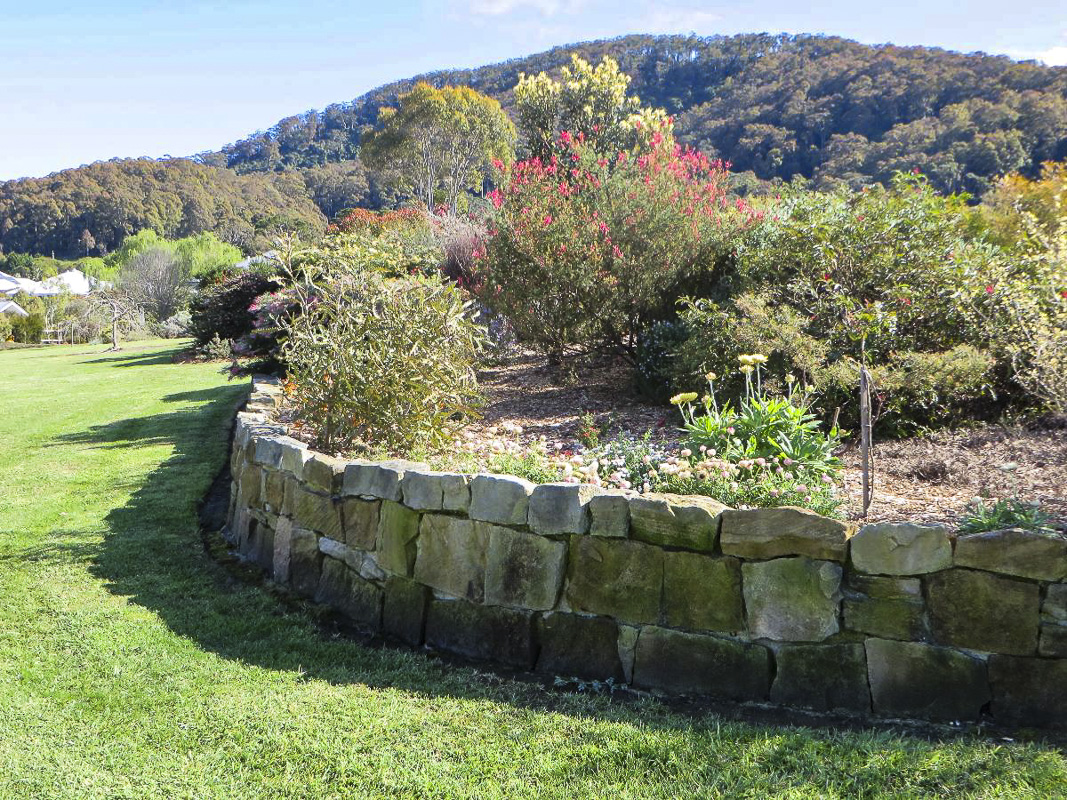
The curve of the dry laid sandstone front wall reflects the form of Coolangatta Mountain.
Image J Fountain

This garden for the birds screens views to neighbours. We can see the mountain isreflected in the curving garden edges.
Image J Fountain

Northern exposure provides ideal exposure for optimum flowering of grevilleas.
Image J Fountain
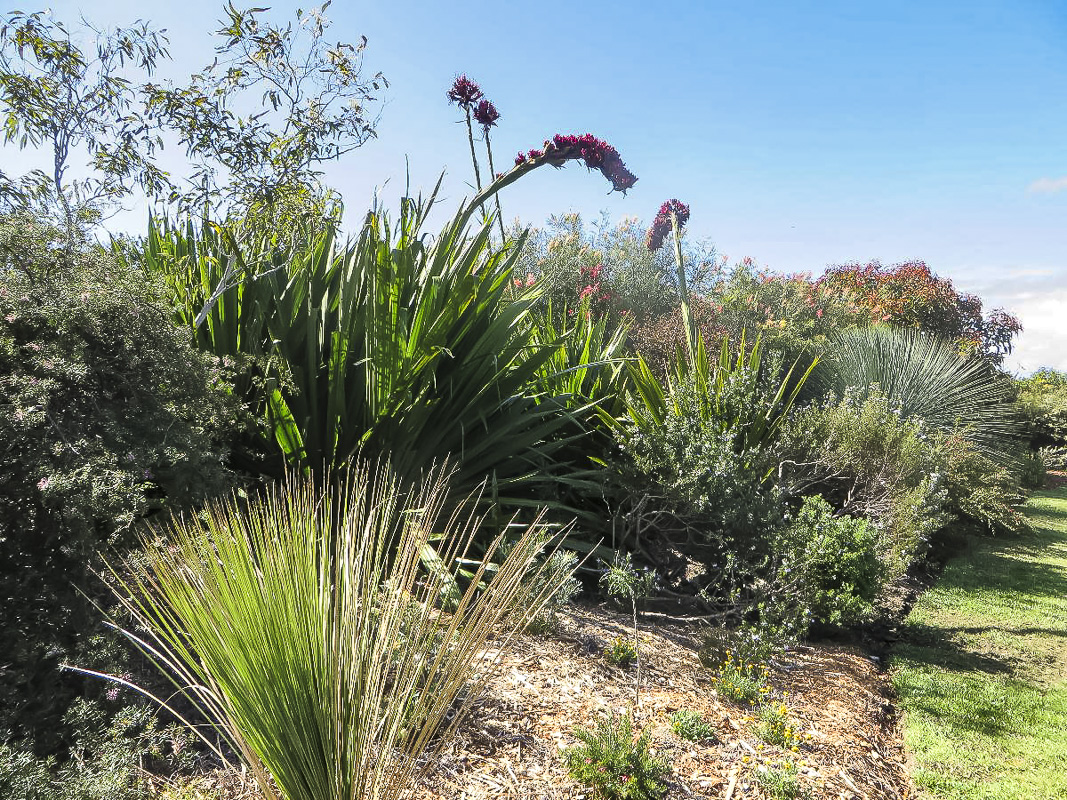
The massing of tufting species of various size creates a dramatic contrasting focal point.
Image J Fountain

We glimpse distant landscapes over one of the Grevillea beds.
Image J Fountain

Varied constructed sculptural elements define and welcome entry to the fruit tree orchard
Image J Fountain
The wetlands
This is a wonderful example of how to make a positive garden element from a negative impact. A completely new opportunity for adding to the plant collections is created.
John created the wetlands as there was a drain coming from the road into his property and the water made its way into the creek below the house. Next he dug trenches and collected, conserved and filtered the water before it entered the creek. He built up ‘island’ areas with excavated soil.
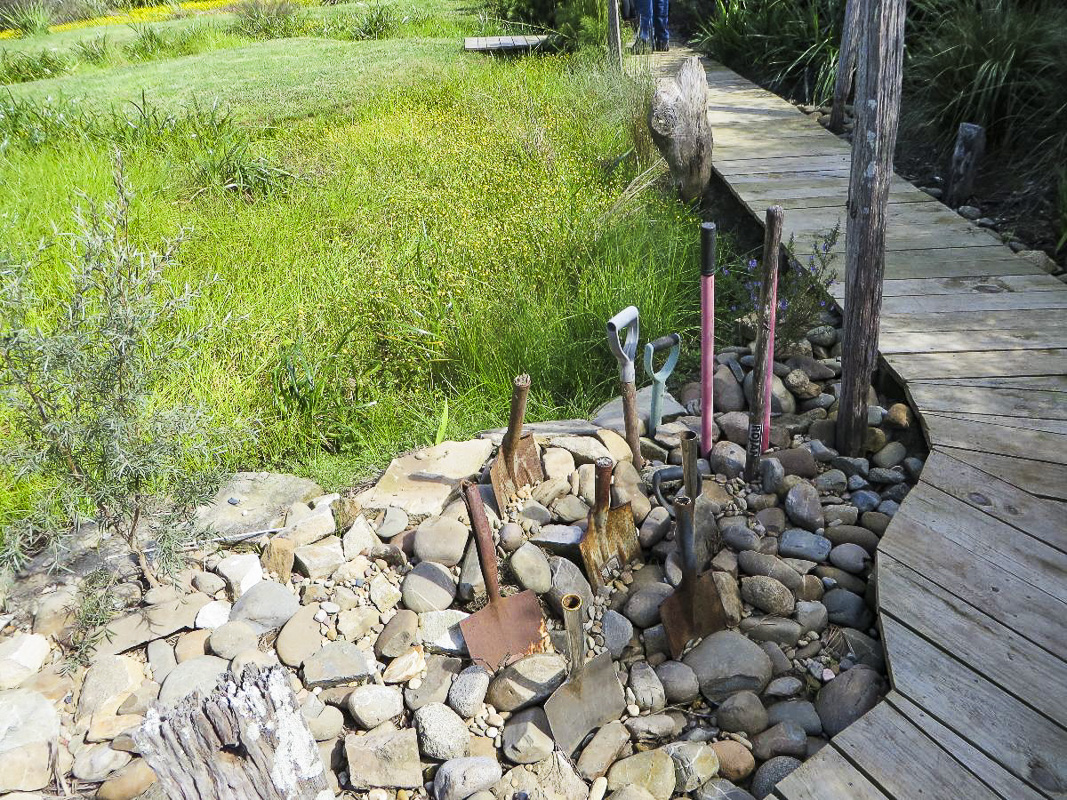
By the boardwalk is Baloksion tetraphyllum – Tassel Cord Rush. Other water-loving plants grow in the wetland depressions. There is a carpet of yellow ground cover in lower areas and the ‘islands’ are defined with mown grass.
Image J Fountain
Colour all year round
John Elton has a passion for colour in the garden. Here is an outline of some of his favourite plants. They make his garden a floral extravaganza, particularly in autumn.
‘One of the great things about having a native garden is that we have colour 12 months of the year. With each season there is the anticipation of what might be springing into flower in the coming months. Some of the more spectacular plants are not in full flower in autumn. Still, there is always plenty to see. Many newly planted shrubs are putting on quite exceptional growth.
An added bonus this year (2021) has been the hundreds of seedlings, mainly grevilleas that have emerged in the garden. I potted these up and the next 3 years or so will tell me whether I have fluked the next big thing! Not much luck of that happening! The only downside are the weeds and boy aren’t there a lot!
Red red red

One of the most dominant colours in April is red. Some of our local grevillea species are in flower including Grevillea macleayana which occurs from Nowra to Ulladulla and west to Morton and Deua National Parks. Commonly known as the Jervis Bay Grevillea, the one in the garden is a ground cover grafted onto a 1.8 standard.
Image HMiles
Grafting plants onto standards displays both the flowers and the silvery underside of the leaves. The shrub is a much larger plant and you need plenty of space to let it grow. With a standard 1 metre is sufficient. It is a pity that the plant is now considered to be rare in the wild.
Other grevilleas are looking stunning. These include the Grevillea cultivars ‘Katherine’s Sister’ (below left), and a Western Australian species called G. bronweneae (below right) whose flowers are an incredible deep red with black tips.
It is a slender shrub that only grows 1- 1.5 metres and which will take morning or all day sun. If you want to try this plant you need to buy grafted and keep an eye out for small white scale
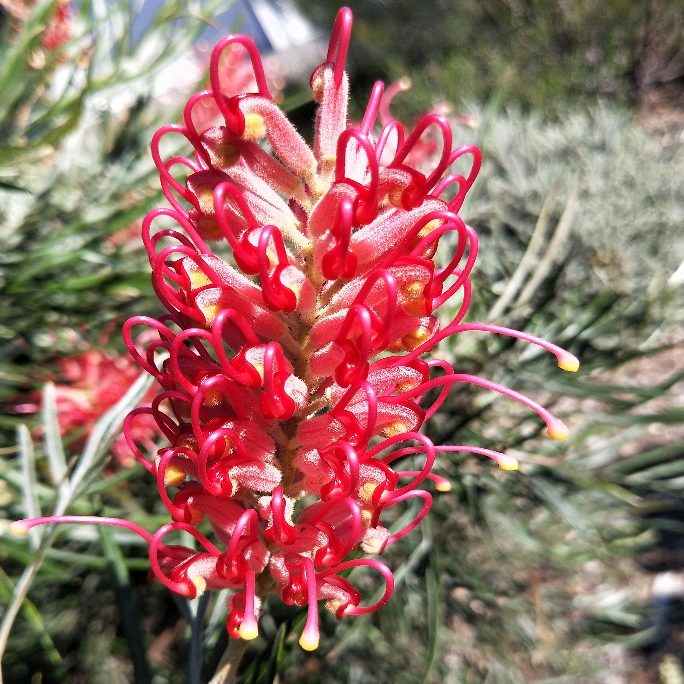

Grevillea aquifolium (below left) is a species from around the Grampians in Victoria and Grevillea dielsiana (below right), is my favourite plant. The flower below is a vibrant red. Yet the orange and yellow form is arguably a more spectacular flower.
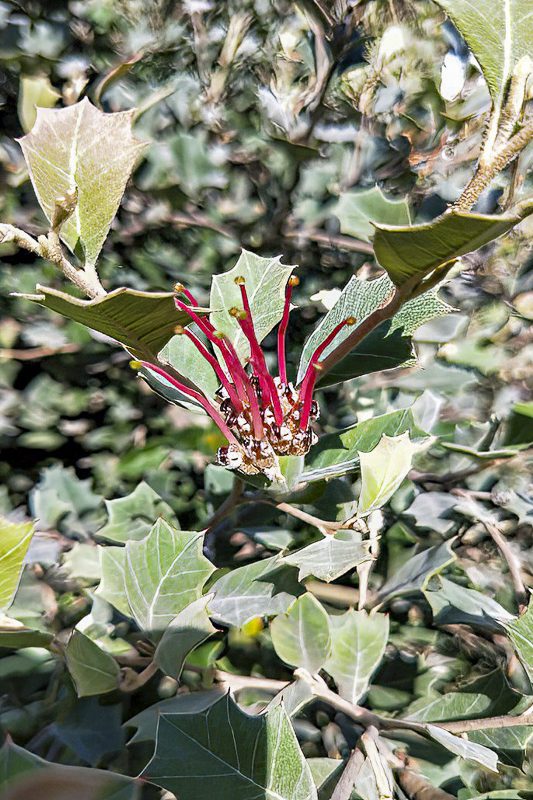

Pink
While pink flowers can make bold statement, I find this colour to be soothing and subtle.
A few years ago I picked up a grafted hakea cultivar at a nursery in Bateman’s Bay that was closing down. The plant was in poor condition but cheap, so I took the risk. The plant now looks magnificent.
It is a cross between Hakea laurina and Hakea petiolaris. It is called Hakea laurina x petiolaris ‘Pinball’. The flowers are truly beautiful, and at each stage of opening provide a different perspective. As one of the photos shows, the bees find the plant irresistible. It grows to about 3 metres, and like most hakea flowers on the previous season’s wood, making pruning challenging.





Grevillea petrophiloides is a favourite when people see it in the garden. It is often used as a second tier plant because flowers appear on long canes that wave above other plants in the wind. It has attractive foliage that should be displayed not hidden.
Image H Miles
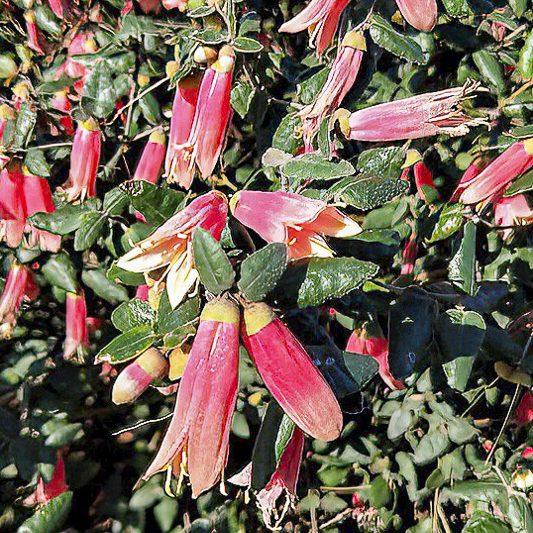
I’m not sure what this correa is, but the way the cream blends into the pink throat on the left is beautifully subtle. It always pays to take a close look at the flowers.
Image J Elton
Purple and blue
What can one say about purple and blue? They always make a statement and provide wonderful contrast. If you want to try your hand at growing eremophilas, there is an abundance of purple flowering species, some of which are in flower in autumn.
Eremophila nivea (below left) often has a second flowering in autumn although it is at its peak in Spring. Scaevola amaeula (below middle) grows prolifically here and is so easy to spread around the garden from cuttings taken at most times of the year. It roots from stems and can be cut back hard if it needs refreshing.
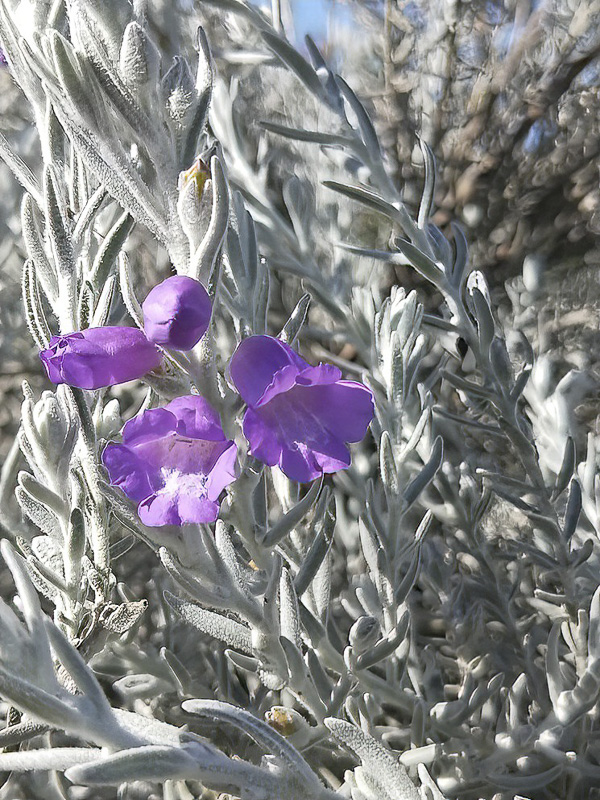
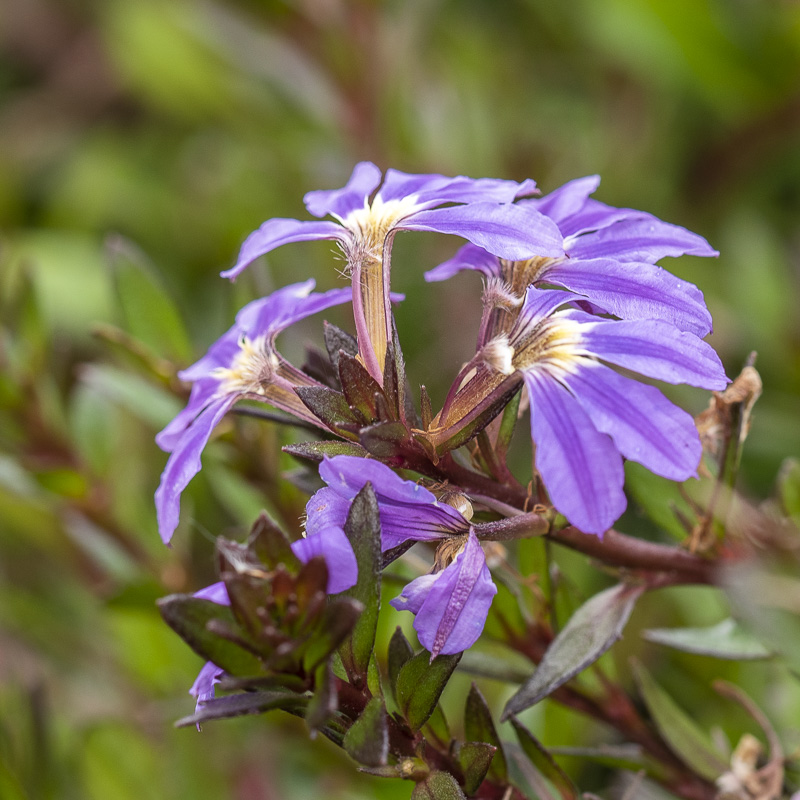

I love lechenaultias even though they only last a season or two. They are easy to propagate so you can always have a few on hand to plant out in the following season. I take my cuttings around February and most strike with about 4-5 weeks. They do need a well drained position. Without full sun, the flowers will be few and far between. If unsure they look great in a pot or a hanging basket. The one shown is Lechenaultia biloba and is in flower now. Spring is its peak flowering time.
Yellow and orange
Not everyone loves these colours. For some they are incongruous with the other plants in the garden. I reckon some of our most brilliant plants are yellow – orange.
Most of the banksias hit their peak around this time of the year. It’s a pity that we can’t grow more of the Western Australian species on the east coast. But there are still some great plants. Here are Banksia paludosa and B. ‘Birthday Candles’.
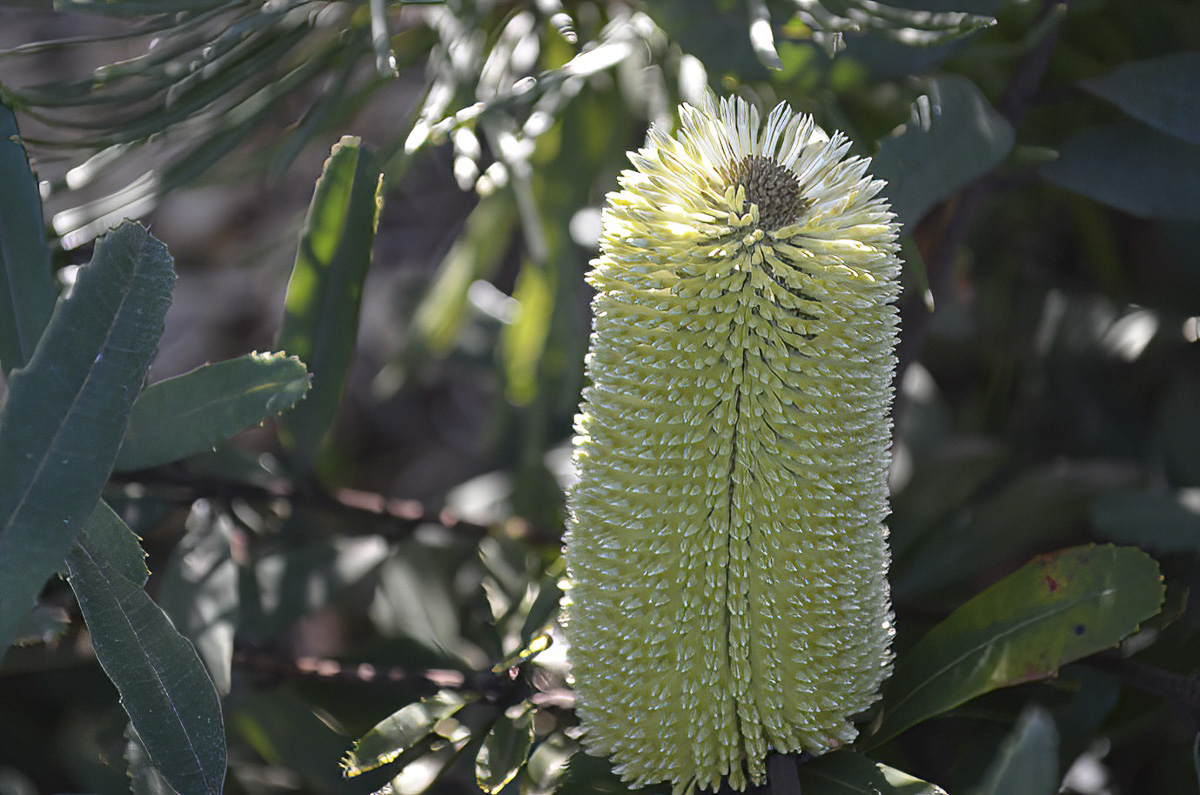

Here are a couple of plants that brighten up any spot in the garden. These grevilleas flower beautifully, as long as they are in full sun! Grevillea ‘Coastal Sunset’ and G. ‘Bush Lemons’ which is better in Spring. You need to prune after their main flowering to keep the plants looking compact and flowering well.
So there you have it – a floral extravaganza indeed.
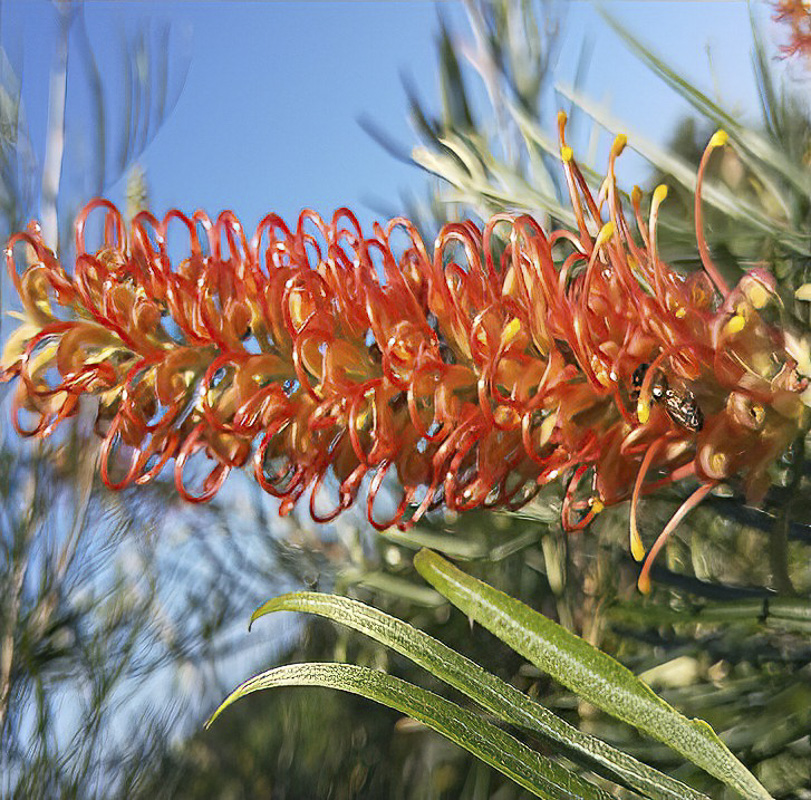

About John Elton
My interest in native plants stems back some 40 years. Since retiring from my work as a history teacher and selective high school principal, we moved to the NSW South Coast where I manage my 2 acre garden. Many of the plants are grevilleas. I am particularly interested in Western Australian natives most of which need to be grafted to survive the humidity of the east coast. My volunteer work at the Illawarra Grevillea Park fits nicely with my interests and continues to teach me a great deal about the art of growing Australian natives. From Garden Drum
 Australian Native Plants Society (Australia)
Australian Native Plants Society (Australia)